The Department of Labor (“DOL”) published a new temporary rule (“New Rule”) today, September 16, 2020, revising and clarifying its previous April 1, 2020 temporary rule (“Prior Rule”) concerning the Families First Coronavirus Response Act (“FFCRA”). The New Rule clarifies intermittent leave issues, revises the optional exemption for employees of health care providers and confirms the DOL’s position that FFCRA leave only applies when there is work to be done. The DOL has also changed several of their responses to Frequently Asked Questions to be consistent with the New Rule.
Intermittent Leave. The Prior Rule stated FFCRA leave could not be taken intermittently unless the employer agreed to the same. The New Rule clarifies that this language does not mean that the employee must take the leave entitlement all at once absent employer agreement, but rather that the employee must use the leave continuously for each qualifying reason. In other words, the employee does not have to take one continuous leave but rather can take multiple continuous leaves. For example, if the employee is experiencing symptoms of COVID-19 and is seeking a medical diagnosis and the diagnosis takes three days, the employee must be paid the three FFCRA days and will still have seven days remaining for additional Emergency Paid Sick Leave Act (“EPLSA”) purposes. An employer cannot require the employee to use up all 10 EPLSA days if the negative diagnosis is received in three days and cannot later deny an EPSLA leave request for a separate purpose. In contrast, if the employee works from home and believes they are able to work for a few hours each day despite having symptoms for those three days, the employer has the choice to either deny the request (requiring the employee to take the full three days off) or grant the request (paying the employee wages for the hours worked during the three days and paying the remainder through the FFCRA).
The DOL also clarified its position on intermittent leave relating to hybrid school and daycare closures to be consistent to its latest informal FAQs. Under the New Rule, employers are required to give employees FFCRA leave to care for a child when the children’s schools are closed certain times, days or weeks. For example, as long as full-time, in-person learning is not an option and the employee must care for the child while learning from home, an employee must be allowed to take off Mondays and Wednesdays if the employee’s child is not permitted to attend school those days. While this seems like “intermittent” leave requiring employer consent, the DOL does not consider this “intermittent” but rather considers each day the school closes and re-opens to be a separate leave. In contrast, the New Rule makes clear that an employee whose child’s school offers only remote working cannot choose to work Tuesday and Thursday without the employer’s consent.
Partial day FFCRA leave is also explicitly required when the leave is otherwise qualifying under the New Rule.
Optional Exemption for Certain Employees of Health Care Providers. Under the Prior and New Rules, health care providers are allowed to provide FFCRA leave to all their employees and take the tax credit. The Prior Rule previously allowed employers to exclude any employee of a health care provider from FFCRA entitlements, focusing this exemption on the activities of the employer not the duties of the employee requesting the leave. The New Rule narrows the optional exclusion to only allow health care providers to exclude employees: (a) providing diagnostic services, preventative service, or treatment services (regardless of whether the provider has a license, registration or certification); (b) directly assisting an employee providing such services; or (c) providing any other services that are integrated with and necessary to the provision of patient care and that, if not provided, would adversely impact patient care. The last category of workers that can be excluded is considered by the DOL to be analogous to but narrower than an exclusion for any employee providing services related to the assessment or care of people’s health. The DOL’s optional exclusion includes nurse assistants, employees processing lab results, employees transporting tissue samples or employees assisting patients in bathing. The DOL states that employees of health care providers that affect, but are not integrated into, the provision of health care are not included, such as IT professionals, maintenance staff, human resources personnel, cooks, food service workers, records managers and billing professionals.
Confirmation of Use of FFCRA Leave Only Where Work is Available. Consistent with its prior position, the DOL affirmed that FFCRA leave may only be used when the employee is unable to work due to do a FFCRA qualifying reason relating to COVID-19’s effect on the employee and would not apply if there was no work to be done.
While the New Rule provides the best guidance as to how employers can interpret the FFCRA, the New Rule is still open to challenges and employers are advised to keep up to date with future developments and consult with employment counsel when specific situations arise.
The Employment and Labor Practice Group at Partridge Snow & Hahn is available to answer your questions about the New Rule and the FFCRA. For additional information and resources visit the firm’s COVID-19 Advisory Group page.


